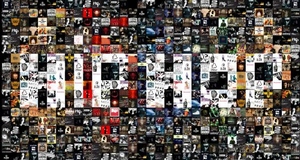From Elon Journal of Undergraduate Research in Communications VOL. 6 NO. 1The Impact of Technology on Music Stars' Cultural InfluenceV. MethodsBy analyzing how users interact with music stars and how they consume artists’ music, we can find the total influence of music celebrities in modern culture. A survey was conducted with college students to understand artists’ current influence with four questions.
This question was asked to understand to what degree music celebrities could impact collegiate students. People who follow music stars on Twitter did so intentionally, giving an indication that the celebrity has at least some role in the consumer’s life. Simply reading tweets from music stars on a timeline can begin to plant the roots for a level of influence, as the messages released by an artist are constantly on display.
Tweeting at or retweeting a celebrity further reflects a music celebrity’s level of impact. While reading a tweet from a celebrity is entertaining, making the conscious decision to interact with an artist on social media is a strong display of a heightened level of influence. At the same time, tweeting and retweeting can create a trickle down effect. For example, if person P follows artist A, person P’s followers will be exposed to person P’s interaction with artist A through the former’s timeline, even though person P’s followers may not directly follow the artist.
As mentioned earlier, the album concept has suffered due to digitalized downloading and streaming. While past findings gave insight that building a personal music library was still important to listeners because of the desire to have some form of music ownership, we can now test how steadfast that sentiment currently is by comparing it to the usage level of streaming platforms, which do not provide a form of ownership.
While the album as one entire entity may be less desired, this does not necessarily mean the influence of the artist would be lessened. Through building a personal digital library or streaming, consumers have access to large quantities of music from the same artist. In fact, services like Spotify can give the listener access to every song some artists have every created. Therefore, the time spent engaging with an artist’s discography is a much better indicator of his or her influence level on a consumer. According to The Official UK Charts Company, a collection of music can officially be labeled as an album should it reach at least 25 minutes in time. Upon modernized practices of consumption, 25 minutes of listening to one artist’s discography would therefore result in a comparable level of engagement. To account for shorter-playing products like EPs (extended play) and to simplify the survey question, the time length was unified into one measurement of 20 minutes. The survey was emailed to 151 Elon University students of different demographics. They were randomly selected from various email lists and class rosters to ensure a well-balanced, eclectic mix of Elon students. VI. ResultsAmong 151 students sent the survey, 64 (42%) responded. Among the respondents, 46 (72%) answered that they do follow famous music artists on Twitter. Of these students who choose to follow the distributed messages of celebrities on social media, 33 stated that they had tweeted at or retweeted a celebrity in the past. Regarding their preferred form of music consumption, Spotify was chosen by 27 respondents (42%), followed by iTunes with 14 respondents; Soundcloud with 8 users; Pandora, 8; 8tracks, 3; YouTube, 3;, and Rdio, 1. Spotify, Soundcloud, Pandora, and 8tracks all involve similar streaming models. All except Soundcloud contain free ad-supported versions, in addition to premium services available. However, it should be noted that at this writing, Soundcloud is in the process of adapting the same business model. Spotify, Rdio, and Soundcloud each offer the ability to journey across the channel, seeking whatever song the user desires. Soundcloud has been more popular among lesser known artists and DJs for its social media-type format that allows quick uploading and efficient access. Pandora and 8tracks are more suited to playlist-oriented abilities. Pandora uses a massive quantity of artists and songs, then pairs them with an internal algorithm to determine their identity and allow users to create “radio” stations of styles similar to an initial selected song or artist. 8tracks allows users to customize and upload their own playlists, giving other users the ability to share and discover them. Finally, YouTube is not solely a music provider, but does have a large catalog of songs and music videos on its website. Among the 64 respondents, 42 (66%) indicated that they do usually listen to one musician for more than 20 minutes, the approximated minimum album length. There were interesting metrics resulting from these respondents. Twenty-five answered “yes” to all four questions. Eight respondents answered “yes” to both questions regarding social media. Furthermore, 17 respondents answered “no” to both social media questions, but did usually listen to an artist for more than 20 minutes. VII. AnalysisThe 25 of the 64 respondents (39%) who stated they follow music stars on Twitter, have retweeted or tweeted at celebrities in the past, and usually listen to one specific artist for more than 20 minutes, can be listed as “high influence” user. The music star clearly plays a large role in their lives and has a strong level of influence in their social media interaction and personal listening habits. Consciously interacting with a music star on Twitter hints at respondents’ psychological relationship and their followers’ indirect relationship with the star through the social trickle down effect. While the allure to the commodity of a physical album is still not present, the time spent within the music is still a character of contemporary fan culture. The eight respondents (13%) who answered “yes” to questions 1 and 2 on Twitter, but spent less than 20 minutes on each artist, can be defined as “high social influence” user. This category suggests a lack of dedication or interest in a single star’s music. Although this would cripple an artist’s ability to influence in the past, the draw of Millennials to follow music stars and other entertainment Twitter accounts opens new possibilities for future intensive interaction. In addition, 17 of the respondents (27%) did not follow or interact with music stars on Twitter, but did often spend more than 20 minutes listening to a single discography, placing them in the category of “high musical influence” user. Despite having access to so many different artists with simply the click of a button, these users still dedicate their time to particular artists when consuming music. But despite a high musical influence, they choose not to interact with the same artists socially on Twitter, which evidences that a more classical relationship to the artist is still present. The preferred music platforms of these respondents were divided among Spotify (6 users), iTunes (3 users), Soundcloud (3 users) and others. Spotify was the overwhelming favorite platform for the entire pool of respondents. Three users for iTunes suggests that the concept of owning music is not as relevant as past studies indicated. VIII. ConclusionThese results show that the yearning for ownership established in the vinyl era is now extinct, with streaming services becoming the most popular forms of consumption among college students. Furthermore, the high level of direct interaction through Twitter with music artists suggests that the past perceived divine, “untouchable” state and epic aura around music stars have diminished significantly from their apex. The previously mentioned study on Spotify users showed listeners engaging in large number of sessions while on mobile devices, and long durations while at a desktop. This allows listeners more time than ever before to consume music. While active and moving throughout the day, users are constantly opening the music app, showing they are constantly engaging in new listening sessions, wherever they may be. When they are stationary, they use the streaming service for long durations of time, showing that they always have a steady access to music. The survey results showed that the vast majority of respondents used some form of streaming service. Applying these two findings, it can be concluded that modern college students are engaged with music more often than ever before because of the total time streaming services allow student users to listen to any of the millions of songs on the app, which have never before been available. Following the logic of a sharp increase in overall time spent consuming music as indicated in the Spotify study, paired with high rates of interaction between fans and music stars, an understanding of modern influence begins to form. Current marketing and media have humanized the stars to a greater degree than ever before, but the rise in overall consumption of music consumers sustain usually by listening to the equivalency of an artist’s album in one session has created new forms of influence. Therefore, the iconic image of the star is not as relevant as before, but the influence is greater than ever before due to the high rates of social engagement now available, combined with a large base of listeners still consuming an artist’s music for the equivalency of an album length. Social media and the lack of interest in album ownership may take power from the music star. But fans today are heavily invested in the actions of the star and constantly engaged with music. Likewise, the star is now embedded in the culture he or she helps shape through direct contact with followers. Although more human, the influence of the music star has only grown because there are more channels for influence, and the time a listener spends engaged in an artist’s work has not wavered despite the option to listen to any song by any artist on a streaming service with ease. The music industry, facing a collapsing business model, has searched for a more efficient approach without much success since the rise of the MP3 era (McLeod 522). While royalties from streaming services seem to be at the forefront of the industry’s present struggle, it may be advantageous for both sides to focus on new forms of income by taking advantage of intense relationships between artists and their followers. AcknowledgmentsThe author would like to thank Dr. Michael Frontani, associate professor of communications at Elon University, for his constant guidance, advice, and inspiration for the topic discussed. Without Dr. Frontani’s enthusiasm for music and culture, this research would not have been conducted. The author would also like to thank the reviewers for the continual improvement of this project. Endnotes
Suggested Reading from Inquiries Journal
Inquiries Journal provides undergraduate and graduate students around the world a platform for the wide dissemination of academic work over a range of core disciplines. Representing the work of students from hundreds of institutions around the globe, Inquiries Journal's large database of academic articles is completely free. Learn more | Blog | Submit Latest in Business & Communications |



















